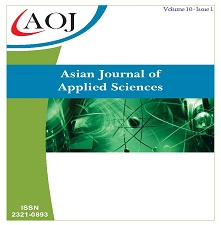The Effect of Open-Ended Approach on Automotive Electricity Learning in SMK Negeri 3 Makassar
DOI:
https://doi.org/10.24203/ajas.v10i1.6853Keywords:
Close-ended, automotive electrical capability, open-endedAbstract
This study aims (1) to find out the students' capabilities in the closed-ended teaching method; (2) to find out the students' capabilities in the open-ended teaching method with a scenario; (3) to find out whether there is an effect of the open-ended teaching method with a scenario on the students' capabilities to solve automotive electrical system problems with problem-based scenarios. The research subject involved a whole class (consisting of 25 students) selected by the purposive sampling technique. The data were collected through observation, tests, interviews, and documentation, then analyzed with descriptive statistical analysis of percentages, frequency distribution tables and hypothesis testing with nonparametric statistical analysis, Mann Whitney test with SPSS-PC 20.0 for windows. The results of the data analysis showed that: (1) the students' capabilities to assemble an automotive electrical system (closed-ended teaching method) was 88%, (2) the students' capabilities to solve automotive electrical problems with a problem-based scenario (open-ended teaching method in a scenario) was 72 %, (3) the effect of the students' capabilities in assembling electricity (closed-ended teaching method) was higher than the students' capabilities to solve electrical problems (scenario of open-ended teaching).
References
Alden Jack Edson, 2017. Learner- Controlled Scaffolding Linked to Open-Ended Problems in a Digital Learning Environment. ZDM 49, no. 5 (October 2017): 735–53, https://doi.org/10.1007/s11858- 017-0873-5.
Askari, G., & Kamarei, M., 2017. Windowing UWB Microwave, Mm-Wave Multi- Port S- Parameter Measurements Using Open-Ended Excess Electrical Length. The Journal of Engineering 2017(6): 257–259.
Baldassarre, G., Mannella, F., Santucci, V. G., Somogyi, E., Jacquey, L., Hamilton, M., & O’Regan, J. K. (2018). Action-outcome contingencies as the engine of open- ended learning: Computational models and developmental experiments. 2018 Joint IEEE 8th International Conference on Development and Learning and Epigenetic Robotics (ICDL-EpiRob), 46–53. https://doi.org/10.1109/DEVL RN.2018.8761035.
Chongo, CN., Githua, B.N., Changeiywo, J.M. (2017). Effect of Open Ended Teaching Learning Approach On Secondary School Students’ Mathematics Achievement In Learning Three Dimensional Geometry. International Journal Of Scientific and Technology Research Volume 6, Issue 12, Desember 2017. ISSN 2277-8616. IJSTR 2017. www.ijstr.org.
Ichinco, M., & Kelleher, C. (2019). Open-Ended Novice Programming Behaviors and their Implications for Supporting Learning. IEEE Symposium on Visual Languages and Human- Centric Computing (VL/HCC). 45–53. Memphis, TN, USA: IEEE, 2019. https://doi.org/10.1109/VLHC C.2019.8818886.
Jangali, S. G., & Gaitonde, V. N. (2020). Attaining competencies in Programme Outcomes through Open-Ended Experiments. Africa Education Review, 17(1), 116–140. https://doi.org/10.1080/181466 27.2018.1481757
Kasaei, S.H., Tome, AM., & Lopes, LS. (2019). Hierarchical Object Representation for Open- Ended Object Category Learning and Recognition. 930th Conference on Neural Information Processing Systems (NIPS 2016), Barcelona, Spain IEETA - Instituto de Engenharia Electrónica e Telemática de Aveiro University of Aveiro, Averio, 3810-193, Portugal.
Kinnebrew, JS., Segedy, JR., & Biswas, G., 2014. Analyzing the Temporal Evolution of Students’ Behaviors in Open-Ended Learning Environments. Metacognition and Learning 9, no. 2 (August 2014): 187–215. https://doi.org/10.1007/s11409- 014-9112-4.
Riadi, Muchlisin. (2019). Model Pembelajaran Open Ended Learning. (on line),( https://www.kajianpustak a.com/2019/03/model- pembelajaran-open ended- learning.html), diakses 27 November 2019.
Wang R., Lehman J., Stanley KO. (2020). Enhanced POET: Open-Ended Reinforcement Learning through Unbounded Invention of Learning Challenges and their Solutions. Published on Mar 19, 2020. in arXiv: Neural and Evolutionary Computing.
Downloads
Published
Issue
Section
License
Copyright (c) 2022 Muhammad Komeini, Muhammad Yahya, Purnamawati Purnamawati

This work is licensed under a Creative Commons Attribution-NonCommercial 4.0 International License.
- Papers must be submitted on the understanding that they have not been published elsewhere (except in the form of an abstract or as part of a published lecture, review, or thesis) and are not currently under consideration by another journal published by any other publisher.
- It is also the authors responsibility to ensure that the articles emanating from a particular source are submitted with the necessary approval.
- The authors warrant that the paper is original and that he/she is the author of the paper, except for material that is clearly identified as to its original source, with permission notices from the copyright owners where required.
- The authors ensure that all the references carefully and they are accurate in the text as well as in the list of references (and vice versa).
- Authors retain copyright and grant the journal right of first publication with the work simultaneously licensed under a Attribution-NonCommercial 4.0 International that allows others to share the work with an acknowledgement of the work's authorship and initial publication in this journal.
- Authors are able to enter into separate, additional contractual arrangements for the non-exclusive distribution of the journal's published version of the work (e.g., post it to an institutional repository or publish it in a book), with an acknowledgement of its initial publication in this journal.
- Authors are permitted and encouraged to post their work online (e.g., in institutional repositories or on their website) prior to and during the submission process, as it can lead to productive exchanges, as well as earlier and greater citation of published work (See The Effect of Open Access).
- The journal/publisher is not responsible for subsequent uses of the work. It is the author's responsibility to bring an infringement action if so desired by the author.


